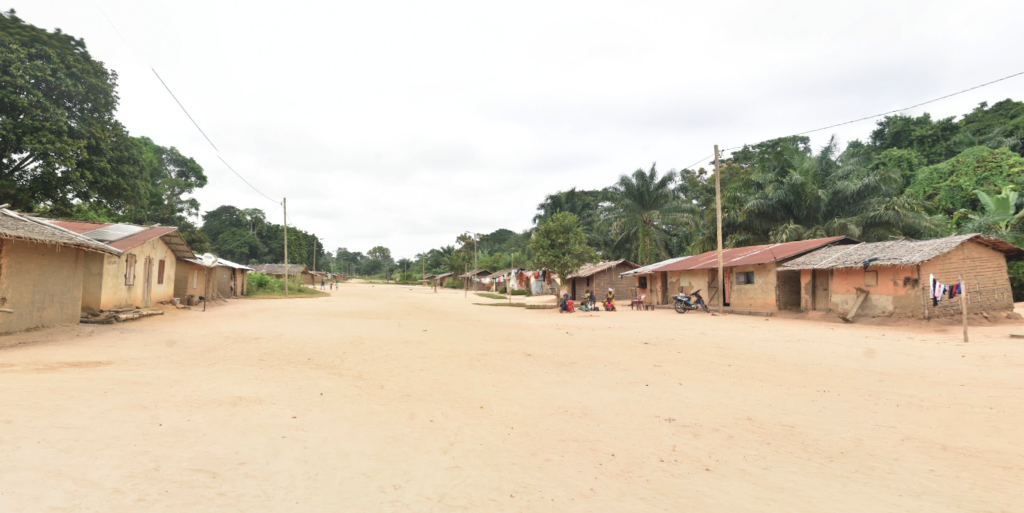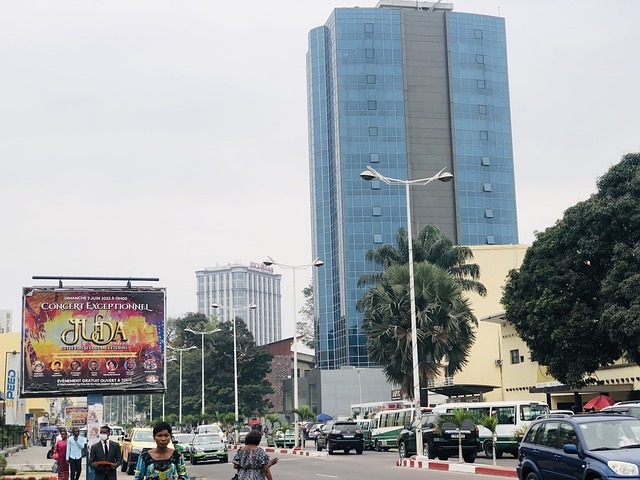Republic of Congo – Let’s explore here

What’s it like in the Republic of Congo?
The Republic of Congo, also known as Congo-Brazzaville, and often just Congo, is a country in central Africa that sits on the equator. Its names in its other official languages are / République du Congo / Repubilika ya Kôngo / Republíki ya Kongó.
About the size of Germany, it is mainly comprised of savannah, rugged mountains and forests. The highest point is Mont Nabemba, in the north west of the country, at 3,350 ft (1,020 m) above sea level.
The country shares land borders with Cameroon, Gabon, Central African Republic and the Democratic Republic of Congo. It also shares a border with Cabinda, a disputed enclave of Angola.
The population of the Republic of Congo is around 6 million people (2023), almost half of whom live in the metropolitan area of the capital, Brazzaville. The country relies heavily on its oil revenues.

A bit about the history of the Republic of Congo
Early History and Indigenous Groups
The Republic of Congo has a rich history shaped by various indigenous groups, including the Kongo, Teke and Mbochi peoples. These groups had well developed social and political systems, with kingdoms such as the Kingdom of Kongo and the Kingdom of Teke flourishing in the region long before European contact. The Congo River played a key role in facilitating trade and communication between these kingdoms and other parts of Africa.
Colonial Period and French Rule
In the late 19th century, European powers began to establish colonies in central Africa. The area now known as the Republic of Congo became a French colony in 1880, and was initially part of French Equatorial Africa. The French exploited the region’s natural resources, including rubber, timber and ivory, through a system of forced labour. The colonisation led to the disruption of local power structures and increased European influence in the region.
Path to Independence
After World War II, nationalist movements advocating for independence gained momentum across Africa. The Republic of Congo, initially part of French Equatorial Africa, became a self governing republic within the French Community in 1958. On 15 August 1960, the Republic of Congo officially gained independence from France, with Fulbert Youlou becoming the first president. The early years of independence were marked by political instability as various factions vied for power.
Political Instability and Military Rule
Following independence, the Republic of Congo experienced a series of political crises. President Fulbert Youlou’s government was overthrown in a coup in 1963, and the country descended into political chaos. In 1968, Marien Ngouabi, a military officer, took power in a coup and established a one party Marxist-Leninist state. Ngouabi’s regime was supported by the Soviet Union, and he introduced socialist reforms, nationalising industries and centralising power in the government.
Civil War and Conflict
In 1977, Ngouabi was assassinated, and his successor, Colonel Joachim Yhombi-Opango, faced increasing opposition. In 1979, Yhombi-Opango was overthrown by a coup led by Denis Sassou Nguesso, a former military leader. Sassou Nguesso’s return to power marked the beginning of his long political dominance. In the 1990s, the country experienced growing unrest and calls for political reforms, leading to a brief period of multi party democracy. However, this was soon interrupted by the outbreak of a civil war between forces loyal to Sassou Nguesso and those opposed to his rule, particularly in the 1997 conflict.
Sassou Nguesso’s Rule and Political Domination
Since 1997, Denis Sassou Nguesso has remained in power, except for a brief period between 1992 and 1997 when he was ousted following the civil war. After his return, Sassou Nguesso has maintained a firm grip on power, often using a combination of political manoeuvring and military force to suppress opposition. His government has been criticised for corruption, human rights abuses and suppression of political freedoms. Despite these criticisms, Sassou Nguesso has managed to maintain stability, particularly through the exploitation of the country’s oil resources.
Recent Developments and Continued Challenges
In 2002, a peace agreement was signed, and the Republic of Congo began rebuilding after years of civil war. However, political tensions persist, especially regarding the country’s political system and its future. In 2009, Sassou Nguesso was re-elected in a controversial vote, and in 2015, a constitutional amendment allowed him to seek a third term. His rule has faced increasing opposition, particularly in the form of protests and criticism over the lack of democratic reforms. In 2021, a contested election saw Sassou Nguesso re-elected for another term, sparking further protests and criticism from opposition groups. While the Republic of Congo has made strides in rebuilding its economy, particularly through oil exports, it continues to face significant challenges related to governance, poverty and political freedoms.
Modern Republic of Congo
Today, the Republic of Congo remains one of the more stable countries in central Africa, although it faces numerous challenges. Its economy is heavily reliant on oil, which accounts for a large portion of government revenue and exports. Despite its wealth in natural resources, the country struggles with high poverty levels, inadequate infrastructure and political unrest.

Republic of Congo road trip
Our Congolese road trip is part of a much larger African road trip.
Map of our road trip through the Republic of Congo

Our current planned road trip through the Republic of Congo takes us from Gabon, through the west of the country before heading on to DRC.
No doubt we’ll explore the country much more than this continent-spanning short route shows, in particular checking out the capital and inland.
Hopefully our journey will improve our knowledge of this intriguing and beautiful country, and enable us to meet some interesting people. We’ll be updating this page at that time – don’t forget to check back 🙂
What’s it like to drive in the Republic of Congo?
They drive on the right hand side of the road in the Republic of Congo. In the main, roads are very poor, with many being unsurfaced dirt tracks. Driving standards are also poor.
Do you require an international driving permit in the Republic of Congo?
We’ve created a dedicated page to driving abroad, which answers this question, and more, which you might find helpful.
Can you use your UK driving license when driving through the Republic of Congo?
We’ve created a dedicated page to driving abroad, which answers this question, and more, which you might find helpful.
Do I need a carnet de passages to drive in the Republic of Congo?
A Carnet de Passages is required to overland in the Republic of Congo. We’ve created a dedicated page to driving abroad, which answers this question, and more, which you might find helpful.
What currency do they use in the Republic of Congo?
In the Republic of Congo they use the Central African CFA franc. Cash is widely used. The use of credit / debit cards is not widely accepted outside of the capital. Travellers cheques are not readily accepted. There are few ATMs in cities and towns throughout the country.
The Central African CFA franc is used in Cameroon, Central African Republic, Chad, Republic of Congo, Equatorial Guinea and Gabon.
You should make yourself aware of the amount that your bank charges you for using credit and debit cards abroad. Often credit cards are cheaper for purchasing items directly, and for withdrawing cash from ATMs.
What language do they speak in the Republic of Congo?
They mainly speak Kituba and Lingala in Gabon, although French is also widely spoken, and is the official language. English is not widely spoken.
What time zone is the Republic of Congo in?
Remember, when you’re planning your next trip to take a look at what time zone it’s in.
Do I need a visa to visit the Republic of Congo?
We’ve created a dedicated, more comprehensive page on visas, which you should find helpful. Check it out!
Is wild camping legal in the Republic of Congo?
Yes, wild camping is fine in the Republic of Congo.
What plug / socket type do they use in the Republic of Congo?
In the Republic of Congo they use plug / socket types C and E.


Health issues in the Republic of Congo
Is it safe to drink water in the Republic of Congo?
No, it is not safe to drink tap water in the Republic of Congo. Bottled water is readily available throughout the country.
What vaccinations are required for the Republic of Congo?
This NHS website is kept up to date with all relevant information on vaccinations in the Republic of Congo.
Phones in the Republic of Congo
What is the country calling code for the Republic of Congo?
The country calling code for the Republic of Congo is +242
What are the emergency phone numbers in the Republic of Congo?
- The emergency number for police in the Republic of Congo is: 117
- In the Republic of Congo, the emergency number for ambulance is: 117 (maybe?)
- The emergency number for fire in the Republic of Congo is: 118
If you’ve got some useful info that you’d like to share, let us know!
And don’t forget to check out all the other pictures!
